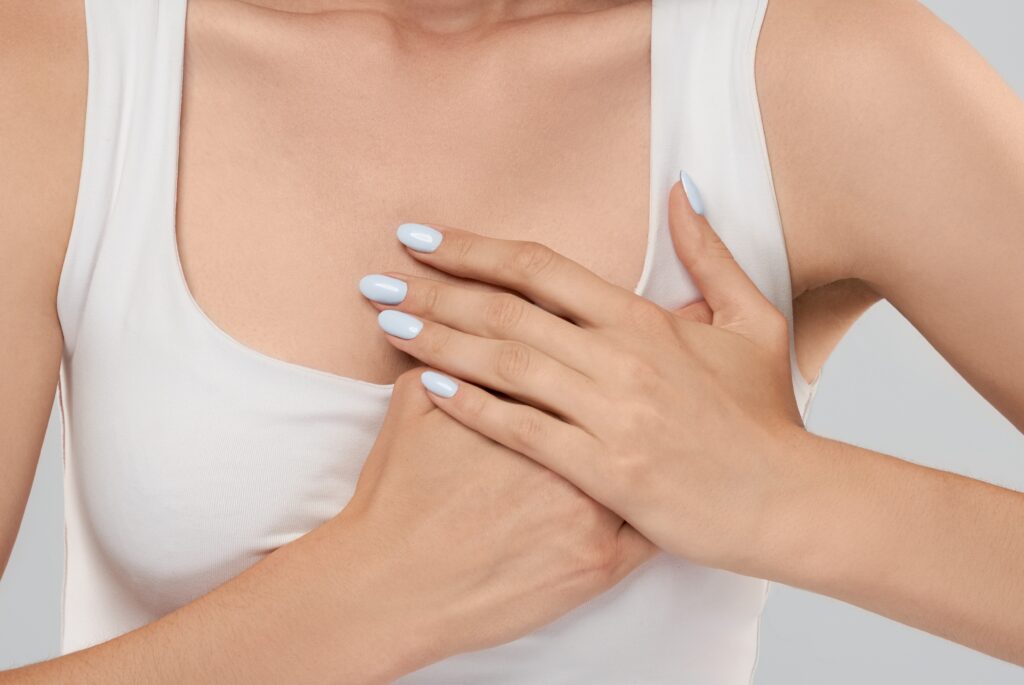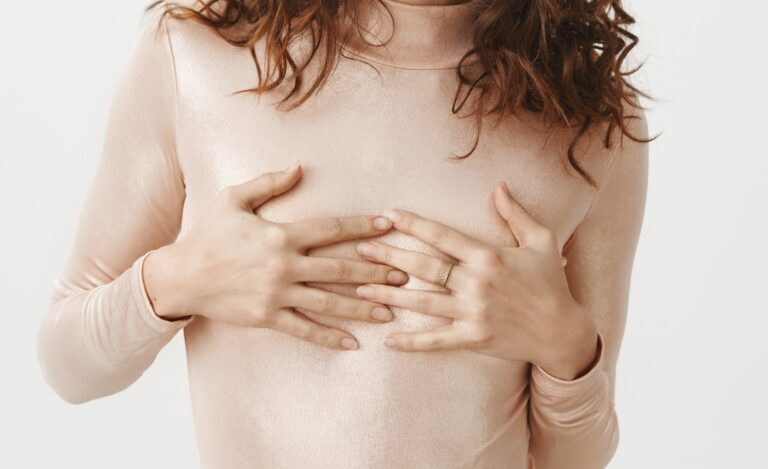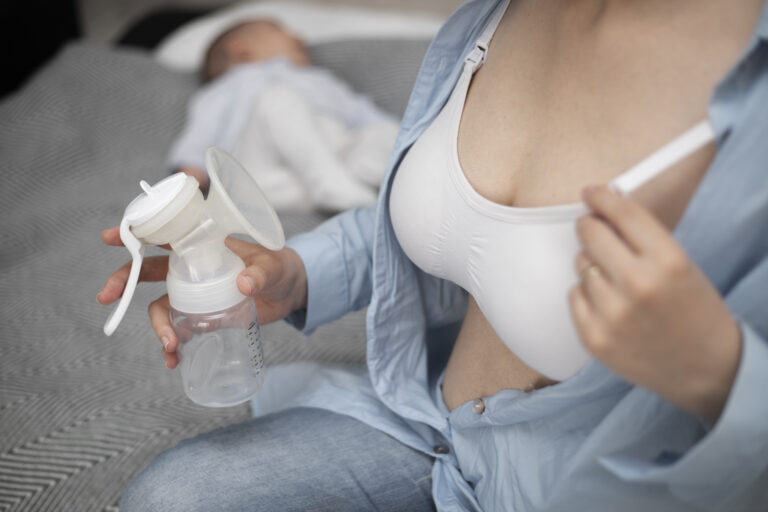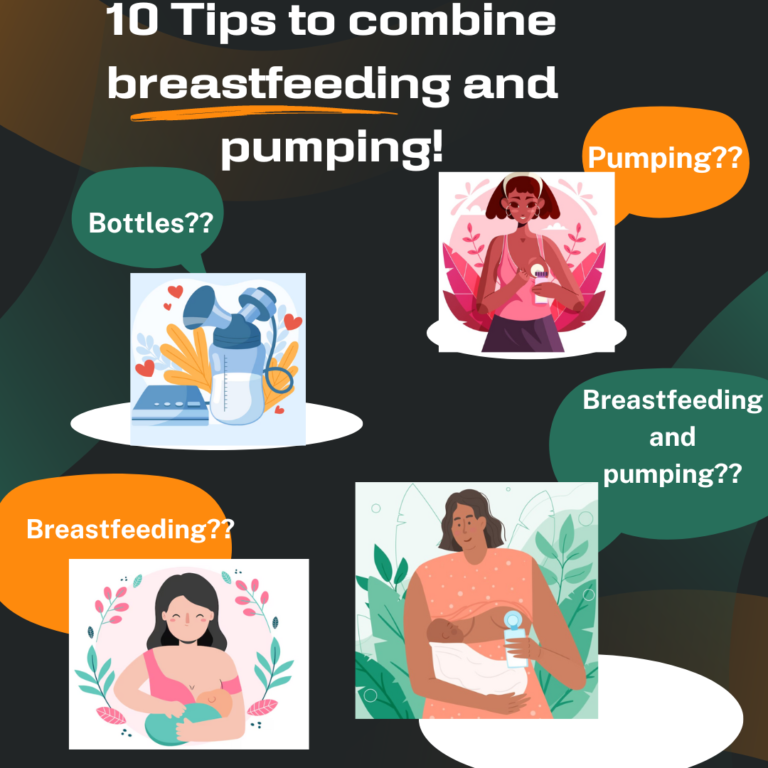What is Breast Mastitis? Know about Causes, Symptoms, Treatment, and Prevention!

Mastitis infection is a condition characterized by inflammation of the breast tissue, usually resulting from an infection. It can cause significant discomfort and pain, but with prompt diagnosis and appropriate treatment, most cases can be effectively managed.

This article will delve into the causes, symptoms, treatment, and prevention of mastitis.
What is mastitis?
Mastitis is a condition that can occur in breastfeeding women when the breast tissue becomes inflamed and infected. It is most commonly caused by bacteria entering the breast tissue through a cracked or sore nipple.
Breastfeeding with mastitis?
Mastitis can make breastfeeding painful and challenging. It is important to continue breastfeeding with mastitis or pumping milk to maintain milk flow and prevent further complications. Emptying the affected breast frequently can help relieve symptoms and promote healing.
What causes Mastitis?
Mastitis usually occurs when bacteria enter the breast tissue through a cracked or sore nipple. The most common bacteria is Staphylococcus aureus, thus sometimes called infectious mastitis.
Other potential causes include:
- Ineffective milk removal from the breast
- Engorgement
- Locked milk ducts
- Weakened immune system
Certain factors that can increase the risk are poor breastfeeding technique, skipped or infrequent feedings, wearing tight-fitting bras, or experiencing excessive stress.
What are the Symptoms?
The signs and symptoms of mastitis can manifest rapidly and may include:
- Breast pain and tenderness: The affected breast may feel warm, swollen, and painful to the touch.
- Redness and inflammation: The breast may appear red, and the skin over the affected area might be warm.
- Flu-like symptoms: Some individuals may experience fever, chills, body aches, and fatigue.
- Breast engorgement: The affected breast may become engorged, and the milk may appear lumpy or contain pus.
- Nipple discharge: In severe cases, pus or blood may be present in the nipple discharge.
What are the available treatments?
If you suspect mastitis, it is crucial to seek medical advice promptly. The following treatment approaches are commonly employed:
- Antibiotics: If an infection is present, a healthcare provider will likely prescribe a course of antibiotics to target the specific bacteria.
- Pain relief: Over-the-counter pain medications such as acetaminophen or ibuprofen can help alleviate discomfort and reduce inflammation.
- Continued breastfeeding or pumping: Emptying the breast regularly helps relieve engorgement and facilitate the resolution. It is generally safe to continue breastfeeding while being treated, as the milk is not harmful to the baby.
- Warm compresses: Applying warm compresses to the affected breast before breastfeeding or pumping can promote milk flow and provide relief.
- Rest and self-care: Getting plenty of rest, staying hydrated, and taking care of oneself are essential aspects of recovery from mastitis.
How can you prevent mastitis at home?
While mastitis cannot always be prevented, adopting certain measures can reduce the risk. Consider the following preventive strategies:
- Good breastfeeding technique: Ensure a proper latch and position during breastfeeding to minimize nipple damage and promote effective milk removal.
- Emptying the breasts: Breastfeed or pump frequently to prevent engorgement and plugged ducts. If you miss a feeding, express milk manually or with a breast pump.
- Nipple care: Keep the nipples clean and dry, and treat any cracks or soreness promptly.
- Avoid tight-fitting bras: Opt for bras that fit well and provide adequate support without constricting the breasts.
- Maintain overall health: Follow a healthy lifestyle, eat a balanced diet, manage stress, and get enough rest to support your immune system.
Difference between Mastitis and Clogged milk ducts

Mastitis and clogged milk ducts are two related but distinct conditions that can occur in breastfeeding women. Let’s discuss each condition separately:
Clogged Milk Ducts: Clogged milk ducts are a common issue during breastfeeding. They occur when milk fails to flow freely through a milk duct, leading to a blockage. Some common causes include infrequent or incomplete breast emptying, pressure on the breast (e.g., tight bras or sleeping on the stomach), or milk stasis due to engorgement.
Signs and symptoms of clogged milk ducts may include a localized tender lump or firmness in the breast, swelling, warmth, and localized pain. The affected area may be reddened but usually does not cause flu-like symptoms like fever or chills.
On the other hand, Mastitis often develops as a result of an untreated or unresolved clogged milk duct. If a blocked duct becomes infected, it can lead to inflammation and infection of the breast tissue, resulting in mastitis. The symptoms are similar to clogged milk ducts but are usually more severe and may include flu-like symptoms such as fever, chills, and body aches.
In summary, clogged milk ducts can be a precursor to mastitis. Prompt recognition and appropriate management of clogged ducts can help prevent the development of mastitis. However, if symptoms progress or flu-like symptoms appear, it is essential to seek medical advice to differentiate between them.
When to contact a doctor?
It is important to contact a healthcare professional if you suspect you have mastitis or if you are experiencing symptoms. Here are some situations when it is advisable to seek medical attention:
- If you notice symptoms of mastitis: If you experience breast pain, redness, swelling, or warmth, or if you develop flu-like symptoms such as fever, chills, body aches, or fatigue, it is recommended to contact your doctor.
- If symptoms worsen or do not improve: If your symptoms worsen despite home remedies or over-the-counter pain relief measures, or if you do not see any improvement within 24 to 48 hours of starting treatment, it is important to seek medical attention. This could indicate a need for a different course of treatment or further evaluation.
- If you develop a breast abscess: If you notice a painful lump in your breast that is accompanied by worsening symptoms or persistent fever, it may indicate the development of a breast abscess. A healthcare professional will need to evaluate and potentially drain the abscess.
- If you experience recurrent mastitis: If you have had mastitis in the past and are experiencing another episode, it is advisable to consult with your doctor. They can assess for any underlying factors contributing to the recurrent episodes and provide appropriate management strategies.
- If you have concerns about breastfeeding: If you have concerns or difficulties with breastfeeding, such as a poor latch, ineffective milk removal, or ongoing nipple pain or damage, it is beneficial to reach out to a lactation consultant or healthcare provider who can provide guidance and support.
Remember, it is always better to err on the side of caution and seek medical advice if you have any doubts or concerns about mastitis or your breastfeeding journey. A healthcare professional can provide a proper diagnosis, recommend appropriate treatment, and address any questions or concerns you may have.

Conclusion
Mastitis can be a challenging condition for breastfeeding women, but early recognition and appropriate treatment can lead to a successful recovery. Seeking medical advice promptly, practicing good breastfeeding techniques, and implementing preventive measures can help reduce the risk of mastitis. Remember, if you experience symptoms suggestive of mastitis, consult with a healthcare professional to receive the necessary guidance and treatment.
Frequently asked questions
- Can I continue breastfeeding if I have mastitis?
Yes, it is generally safe to continue breastfeeding when you have mastitis. In fact, breastfeeding or pumping frequently can help alleviate the symptoms and promote healing. The milk is not harmful to the baby, and the act of breastfeeding can help empty the breast and relieve engorgement. However, it is essential to ensure that your baby is latching properly to minimize further nipple damage. If you have concerns or questions, consult a healthcare professional for personalized advice.
2. How long does it take to recover from mastitis?
The recovery time for mastitis can vary from person to person. With proper treatment, many individuals experience significant improvement within 24 to 48 hours. However, it is crucial to complete the full course of antibiotics prescribed by your healthcare provider to ensure that the infection is completely cleared.
3. Can mastitis lead to complications?
In most cases, mastitis can be effectively treated with antibiotics and supportive measures without complications. However, if left untreated or inadequately managed, it can lead to more severe complications, such as a breast abscess.
4. Can mastitis occur in women who are not breastfeeding?
Although mastitis is most commonly associated with breastfeeding, it can occur in women who are not lactating and even in men, although it is rare. Non-lactational mastitis typically arises due to skin infections, such as a cracked nipple, nipple piercing, or a pre-existing condition like eczema. It can also occur as a result of an underlying immune system disorder.
References
- Haxhiaj K, Wishart DS, Ametaj BN. Mastitis: What It Is, Current Diagnostics, and the Potential of Metabolomics to Identify New Predictive Biomarkers. Dairy. 2022; 3(4):722-746. https://doi.org/10.3390/dairy3040050
- Ouedraogo, M.O., Benova, L., Smekens, T. et al. Prevalence of and factors associated with lactational mastitis in eastern and southern Africa: an exploratory analysis of community-based household surveys. Int Breastfeed J 17, 24 (2022). https://doi.org/10.1186/s13006-022-00464-x
- Pevzner M, Dahan A. Mastitis While Breastfeeding: Prevention, the Importance of Proper Treatment, and Potential Complications. J Clin Med. 2020 Jul 22;9(8):2328. doi: 10.3390/jcm9082328. PMID: 32707832; PMCID: PMC7465810.
Note: If you experience any unusual symptoms or have concerns during breastfeeding that make you feel uneasy, it is strongly recommended to seek prompt medical attention. Visiting a nearby hospital or consulting with a healthcare professional will ensure proper evaluation, diagnosis, and appropriate management, ultimately ensuring the health and well-being of both you and your baby. Your healthcare provider is your best ally in addressing any breastfeeding-related issues and providing the necessary support and guidance.
















Hello,
Wondering if you accept guest posts or link inserts on existing posts on thebreastfeed.com?
How much would you charge for this?
Justin
If you’d like to unsubscribe click the following link.
https://mailerking.xyz/optout/?site=thebreastfeed.com